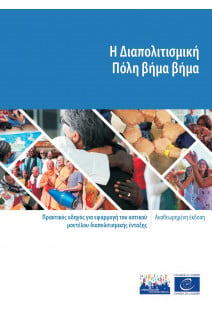A practical guide for applying the urban model of intercultural inclusion
Diversity has become a key feature of societies today and is particularly tangible in urban centres. While people of diverse national, ethnic, linguistic and faith backgrounds have immensely contributed to post-war prosperity, inequalities related to origin, culture and skin colour persist, and anxiety about pluralism, identity and shared values is often politically instrumentalised. The challenge of fostering equity and cohesion in culturally diverse societies has become more acute. Cities are uniquely placed to imagine and test responses to this challenge.
The Council of Europe and its partner cities have developed and validated an intercultural approach to integration and inclusion which enables cities to reap the benefits and minimise the risks related to human mobility and cultural diversity. A decade after the start of this work, there is growing evidence that diversity, when recognised and managed as a resource, produces positive outcomes in terms of creativity, wellbeing and economic development.
The Intercultural Cities Programme (ICC) invites cities in Europe and beyond to explore and apply policies that harness diversity for personal and societal development. This Step-byStep guide is a tool for local authorities to apply the urban model of intercultural integration and inclusion. It reflects the lessons learned and builds upon the examples of cities manging diversity as a resource in order to facilitate the building of trust and shared identities across diverse groups.
FOREWORD INTRODUCTION
Key definitions
UNDERSTANDING INTERCULTURAL INTEGRATION
1. The new era of diversity
2. Why interculturalism?
3. The diversity advantage
4. Guiding principles for intercultural integration
5. The conditions needed to tap the potential benefits of diversity
6. What does an intercultural city look like?
BUILDING AN INTERCULTURAL CITY
1. Develop an intercultural vision for the city
2. Prepare an Intercultural strategy
3. Build the Intercultural strategy of the city
ELEMENTS OF AN INTERCULTURAL STRATEGY
1. Interaction
2. Participation
3. Anti-discrimination
4. Welcoming newcomers
5. Education
6. Neighbourhood
7. Public services
8. Business and labour
9. Cultural and social life
10. Public space
11. Mediation and conflict resolution
12. Language
13. Media and Communication
14. International outlook
15. Intercultural intelligence and competence
16. Leadership and Citizenship
MONITORING IMPLEMENTATION AND MEASURING PROGRESS
1. Collect data
2. Identify indicators
3. Monitor progress
ANNEXES
1. Normative texts of the Council of Europe
2. Further reading







